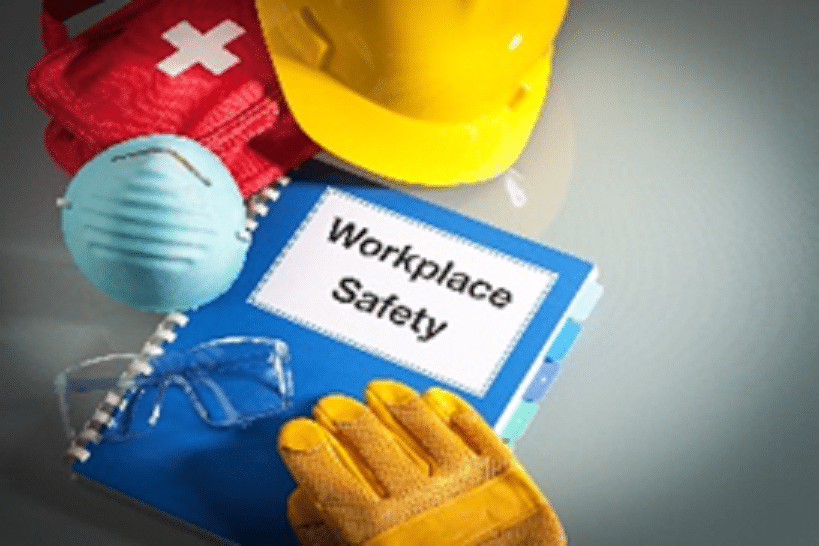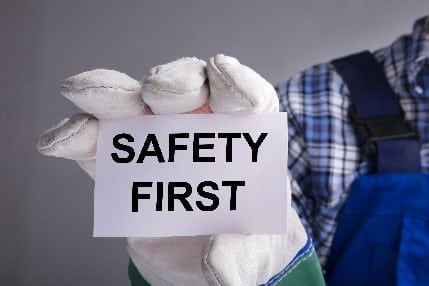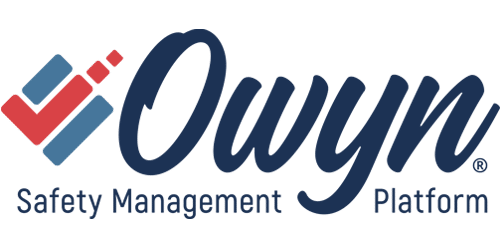Establishing a Safety Program
Problem: You Need a Safety Program – FAST!
When it comes to workplace safety, time is of the essence. You may find yourself in urgent need of a written safety program for several reasons:
- An OSHA inspector has requested proof of a safety program during an inspection.
- You need to meet the demanding requirements of a third-party risk management company to bid for jobs.
- You want to lower your liability or workers’ comp premiums, which may be skyrocketing.
- You simply want to be proactive about safety in your workplace.

Whatever the reason, the message is clear: you need a written safety program, and you need it now.
The Stakes: Protect Your Business and Your Employees
Without a safety program, your business is at significant risk. You could face fines, increased liability, lawsuits, barriers to securing work, and higher insurance costs. However, with a comprehensive safety program in place, you can effectively protect both your business and your employees.
Your Solution: Establish a Written Safety Program Today
A written safety program is not just a document; it’s a declaration of your commitment to a culture of safety and health within your organization. It empowers you as a leader to protect your employees and create a safer workplace.
How a Written Safety Program Helps You
An effective safety program outlines your company’s safety policies and procedures, addressing critical areas that protect your employees and your business. Here’s what it should include:

- Protecting Employees: Clearly state how you will protect your employees from the hazards they face in the workplace.
- Safety Training: Describe the safety training you will provide to ensure that employees are prepared to handle potential hazards.
- Workplace Inspections: Explain how you will perform regular safety inspections to identify and mitigate risks.
- Policy Enforcement: Detail how you will ensure that your policies and procedures are consistently followed by all employees.
- Program Evaluation: Outline how you will evaluate your program regularly to ensure it continues to prevent incidents and avoid OSHA citations.
Your Path Forward: Options for Your Safety Program In the following sections, we will guide you through three effective options for developing and implementing your safety program. By taking action now, you can create a safer work environment for your employees and reduce your liability and compliance risks.
A written safety program is not just a document; it’s a declaration of your commitment to a culture of safety and health within your organization. It empowers you as a leader to protect your employees and create a safer workplace.
Make It Happen: Your Options for Establishing a Safety Program
Establishing a safety program can seem overwhelming, but you have options. Here are three effective paths you can take:
Option 1. Write your own safety program.
Overview:
All the information you need to write your own safety program is available online for free. The OSHA website, as well as individual state websites, provides helpful resources for establishing your safety program.

Pros:
- Cost-Effective: Low upfront costs.
- Customization: Full control over content tailored to your specific needs.
- Flexibility: Ability to update and modify the program as needed.
Cons:
- Time-Consuming: Requires significant time investment to research and develop.
- Expertise Required: Risk of missing critical elements or compliance issues without proper safety knowledge.
- Limited Support: Lack of professional guidance and support.
Option 2. Hire a safety consultant to develop an individualized safety program.

Overview:
A professional safety consultant can inspect your workplace, identify your unique safety requirements, and formulate an individualized safety program. A quick online search for “safety consultants near me” will reveal many local options from which to choose.
Pros:
- Expertise: Access to specialized knowledge and experience.
- Customization: Programs tailored specifically to your business.
- Ongoing Support: Consultants provide training, support, and updates.
Cons:
- Higher Cost: Typically more expensive than developing in-house or purchasing pre-made programs.
- Dependence on External Providers: Reliance on consultants for updates and modifications.
- Variable Quality: Quality can vary based on the consultant’s experience and reputation.
Option 3. Purchase a ready-made safety program
Overview:
Many online retailers sell customizable safety programs that meet all the necessary requirements for your industry. Of course, we stand behind the products we offer here at OWYN Safety.

Pros:
- Quick Implementation: Faster deployment compared to developing from scratch.
- Proven Framework: Based on established standards and best practices.
- Support and Updates: Often includes customer support and regular updates to maintain compliance.
Cons:
- Less Customization: May not perfectly fit all specific needs of your business.
- Ongoing Costs: Possible subscription fees or costs for additional features.
- Generic Elements: Risk of including irrelevant sections that may not apply to your specific industry or operations.

Choose Your Path Forward
With these options in mind, you can choose the approach that best fits your company’s needs, budget, and timeline. Whether you decide to write your own program, hire a consultant, or purchase a ready-made solution, the key is to ensure your safety program is comprehensive, compliant, and effective in protecting your employees.
Next Steps: Implement Your Safety Program
Don’t just leave your new safety program in a file on your computer or a binder on the shelf—put it to work! Implement the program effectively by:
- Training Your Employees: Ensure everyone understands their roles and responsibilities related to safety.
- Conducting Regular Safety Inspections: Identify potential hazards and areas for improvement.
- Continuously Reviewing and Updating the Program: Adapt your safety program to changing regulations and workplace conditions.

By taking these steps, you can create a culture of safety that protects your employees and profits while enhancing your business’s reputation.
Conclusion: Your Commitment to Safety
Your commitment to safety is not just a legal requirement; it’s a moral obligation to protect your employees and foster a culture of safety in your workplace. Moreover, prioritizing safety can have a positive impact on your bottom line. By investing in a comprehensive safety program, you reduce the risk of workplace injuries, lower insurance premiums, and enhance employee morale and productivity.
Get Started with OWYN Safety
To help you get started on your safety journey, consider the OWYN All-In-One Safety Solution Platform. This comprehensive resource simplifies the process of establishing and maintaining your safety program, making it easier for you to focus on what matters most—protecting your employees and growing your business.
While we specialize in providing ready-made safety programs, we’re also here to answer any questions you may have about writing your own program or hiring a safety consultant.
Visit us at OWYNsafety.com for more information. If you have questions or need assistance, feel free to chat with us, email at support@owynsafety.com, or call 1-888-475-5353, Monday through Friday, 7 AM to 5 PM EST.
Taking action today not only creates a safer work environment for your employees but also strengthens your business’s reputation and profitability. Make safety a priority, and watch your business thrive!

